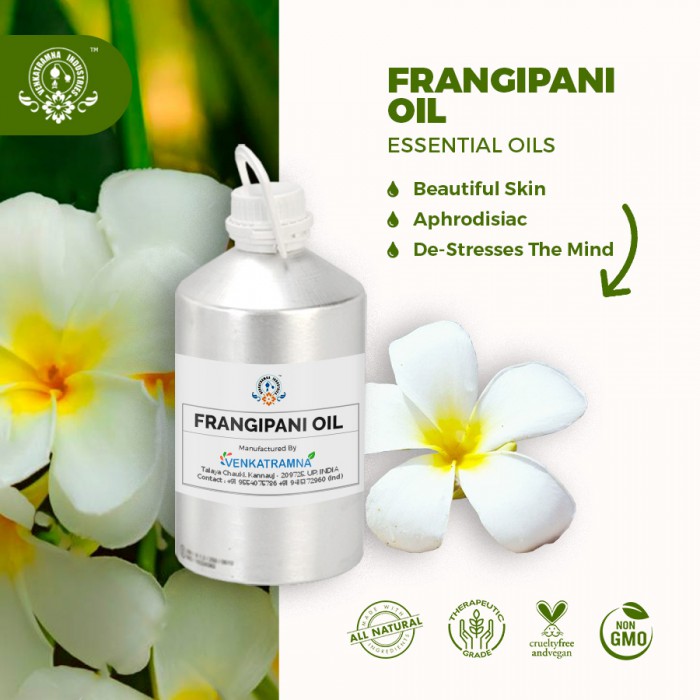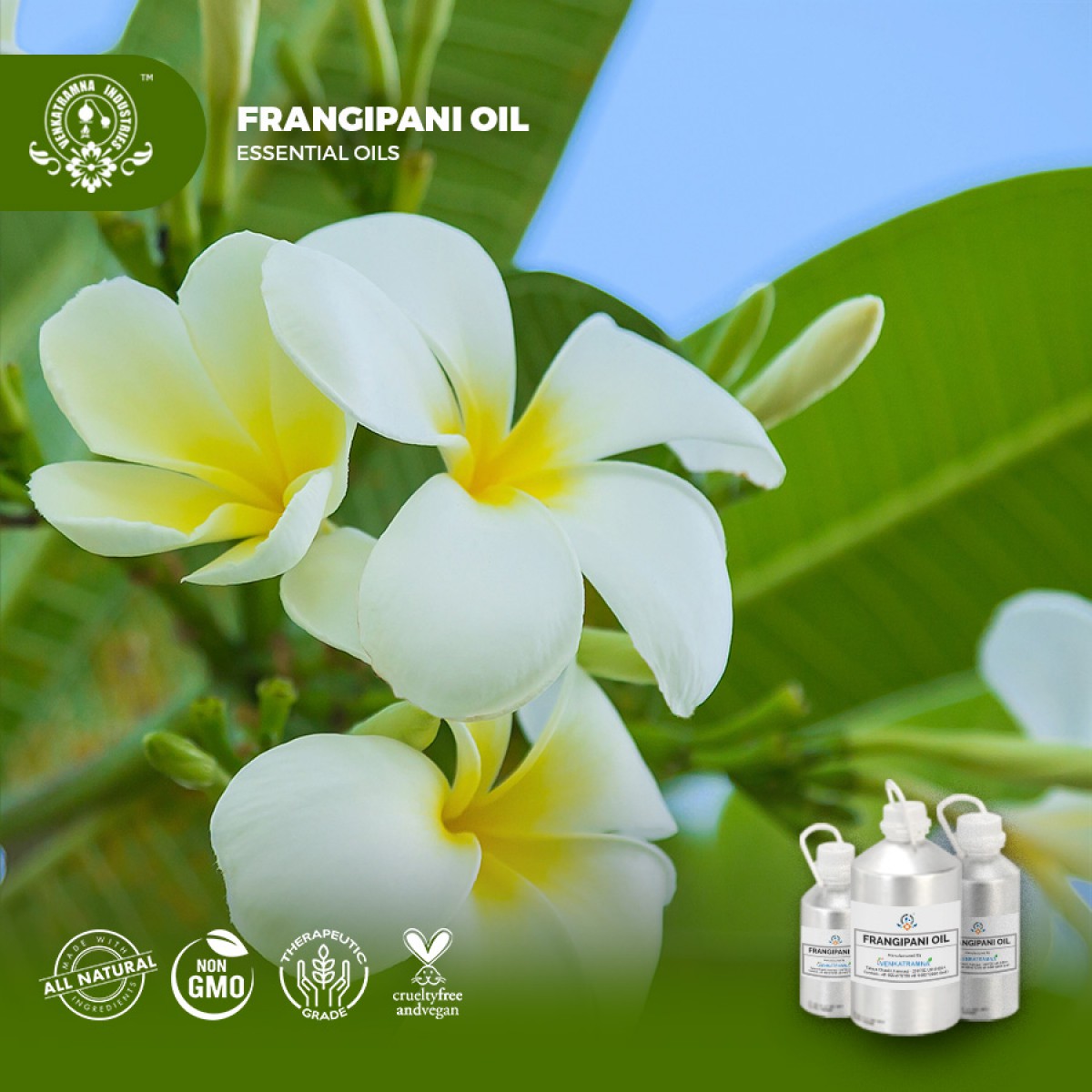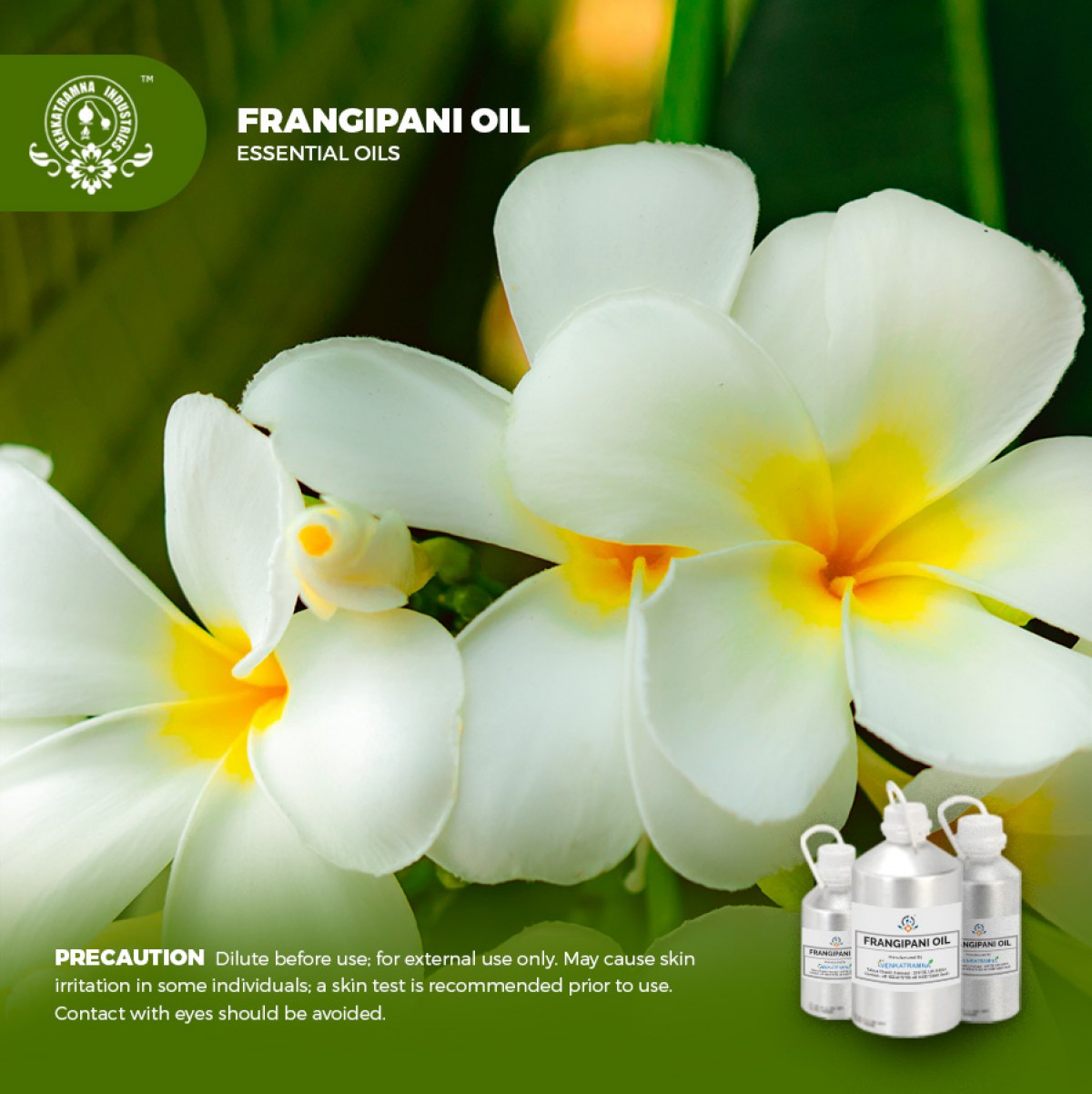Botanical Name: Plumeria alba Common name: Caterpillar tree, pagoda tree, pigeon wood, Read More
|
Botanical Name: |
Plumeria alba |
|
Common name: |
Caterpillar tree, pagoda tree, pigeon wood, nosegay tree, white
frangipani, kath golap, champa, White Champa |
|
Plant family: |
?Apocynaceae |
|
Genus: |
Plumeria |
|
Appearance/Color: |
Pale yellow
clear liquid. |
|
Odor: |
Floral, Herbal, Frangipani like, heady floral note of Plumeria
& fruity - Exotic smell similar to "lei" garland |
|
Blends With: |
Bergamot, Clary Sage, Clove Bud, Coriander Seed, Ginger,
Grapefruit, Lemon, Mandarin, Neroli (Orange Blossom), Orange, Palmarosa,
Patchouli, Petitgrain, Rose, Sandalwood and Ylang Ylang. |
|
Origin: |
India |
|
Source: |
Seeds |
|
Method of
Extraction: |
Steam Distillation |
The genus Plumeria L. (family
Apocynaceae), comprises of lactiferous trees and deciduous shrubs, is a native
of tropical America, and now widely distributed from southern Mexico to
northern South America, tropical areas of Pacific islands, Caribbean, India.
Plumeria spp. are commonly grown as ornamental plants in premises, parks,
gardens and graveyards because of their beautiful fragrant flowers of various
color and size. The essential oil and fragrant constituents from the flowers of
various Plumeria species are used in perfumery, cosmetics and aromatherapy.
Plumeria spp. are known for their diverse medicinal uses in indigenous
medicine, mainly as purgative, rubefacient, errunenagogue, febrifuge or
diuretic, and for treatment of dropsy dysuria, diarrhea, itch, bronchitis,
cough, asthma, fever, piles, dysentery, blood disorders and tumors.
It is commonly referred to as the
Frangipani after the famous fragrance created by Muzio Frangipani. Frangipani
tree is known as the “Tree of Life”, "Temple tree", other common
names are: Plumeria, In Hawaii, the name is "melia", In India, the
name is "champa" or "chaffa", in thai as
"Leelawadee" and as "Camboja"in Indonesia.
Natural Frangipani oil is highly regarded in Ayurveda for centuries for its healing powers. Frangipani essential oil has a important place in aromatherapy due to the scent’s rejuvenating qualities for the mind and body. it is believed to effects deep internal cleansing that refreshes the Mind, body and soul.
DISCLAIMER
The complete range of conditions
or methods of use are beyond our control therefore we do not assume any
responsibility and expressly disclaim any liability for any use of this
product. Information contained herein is believed to be true and accurate however,
all statements or suggestions are made without warranty, expressed or implied,
regarding accuracy of the information, the hazards connected with the use of
the material or the results to be obtained from the use thereof. Compliance
with all applicable federal, state, and local laws and local regulations
remains the responsibility of the user.
The FDA has not evaluated the
statements on this website. No claims are made by Venkatramna Industries as to
the medicinal value of any products from vriaroma.com or by us. The information
presented here is for educating our customers about the traditional uses of
essential oils and is not intended to diagnose, treat, cure, or prevent any
disease. You are responsible for understanding the safe application of these products.
If you have any questions, please call or email us for further information.
As per NAHA guidelines, New Directions Aromatics
(NDA) does not recommend the ingestion of essential oils. It is imperative to
consult a medical practitioner before using Essential Oils for therapeutic
purposes. Pregnant and nursing women and those taking prescription drugs are
especially advised not to use this product without the medical advice of a
physician. The oil should always be stored in an area that is inaccessible to
children, especially those under the age of 7.
Different part of the P. alba was
believed, have been useful in a variety of diseases, namely, the diseases of
Malaria, Leprosy, Rheumatism, and abdominal tumors. The milky sap of the stem
and leaf is applied to skin diseases such as herpes, scabies, and ulcers. Its
bark is used as plaster over hard tumors, the seeds in hemostasis while the
latex is used as purgative, cardiotonic, diuretic, and hypotensive.
Frangipani Oil in Pharma
P. alba is used in the
treatment of ulcers, herpes, scabies, and seeds possess hemostatic properties.
The bark is bruised as plaster over hard tumors.
Essence of Frangipani Oil
Frangipani essential oil is very
potent and only a small amount is needed and would be great as a fixative for
perfumes. The flower extract is used as a primary ingredient in world’s most
expensive perfumes oriental to French lines. The romantic scent of frangipani
has a strong aroma, Its scent encourages a sensual and provocative response due
to its rich and exotic floral smell.
Due to its rich, exotic and
sensual fragrance, it is widely used in high class perfumery and in spa &
wellness products.
COMMON USAGE
·
Antimicrobial
·
Larvicidal
·
Hepatoprotective
·
Antiarthritic
·
Anti-fungal
Ingredients:
|
S.No |
Key Constituents |
Strength (%) |
|
1 |
Ethanol |
6.15 |
|
2 |
2-Heptanone |
0.20 |
|
3 |
Ethyl octanoate |
0.18 |
|
4 |
2-Undecanone |
0.28 |
|
5 |
Decanoic acid, ethyl ester |
1.18 |
|
6 |
Dodecanoic acid, ethyl ester |
7.56 |
|
7 |
Geraniol |
0.34 |
|
8 |
Phenylethyl Alcohol |
0.64 |
TOXICOLOGICAL
INFORMATION
Safety Summary
·
Hazardous No Data
·
Contraindications Not Known
Organ Specific Effects
·
Neurotoxicity Frangipani Oil vapors are sedative
to mice
Systemic Effects
·
Acute Toxicity Not known
·
Skin corrosion/irritation: May be irritating to
skin.
·
Serious eye damage/irritation: May be irritating
to eyes. Prompt rinsing and removal of the substance will avoid damage.
·
Respiratory sensitization: Not applicable under
normal use.
·
Germ cell mutagenicity: Not specified
·
Carcinogenicity: IARH: No component of this
product present at levels greater than or equal to 0.1% is identified as
probable, possible or confirmed human carcinogen by IARC. ACGIH: No component
of this product present at levels greater than or equal to 0.1% is identified
as probable, possible or confirmed human carcinogen by IARC.
·
NTP: No component of this product present at
levels greater than or equal to 0.1% is identified as probable, possible or
confirmed human carcinogen by IARC.
·
OSHA: No component of this product present at
levels greater than or equal to 0.1% is identified as probable, possible or
confirmed human carcinogen by IARC.
·
Reproductive toxicity: Not specified
·
STOT-single exposure: Not specified
·
STOT-related exposure:Not specified
·
Aspiration hazard: Not specified
·
Information on the likely routes of exposure
Skin/scalp contact.
·
Symptoms related to the physical, chemical, and
toxicological characteristics None known. Irritation of the eye if exposed.
Redness of the skin if irritated.
·
Delayed and immediate effects and also chronic
effects from short-term and long-term exposure Exposure to vapors from this
solvent in excess of the stated occupational exposure limit may result in
adverse health effects such as mucous membrane and respiratory system
irritation and adverse effects on kidney, liver, and central nervous system.
Repeated or prolonged contact with the substance may cause removal of natural
oil from the skin, resulting in non-allergic contact dermatitis and absorption
through the skin. Splashes in the eyes may cause irritation and reversible
damage.
ECOLOGICAL
INFORMATION
·
Acute aquatic toxicity: Not Available.
·
Persistence and degradability: Biodegradation is
expected
·
Bio-accumulative potential: Bioaccumulation is
unlikely
·
Mobility in soil Unknown
·
Results of PBT and vPvB assessment: Not
determined
Do not allow the material to
enter streams, sewers or other waterways.





 PS-Frangipani.pdf
PS-Frangipani.pdf




